Lighting the Past: The Crombie Collection
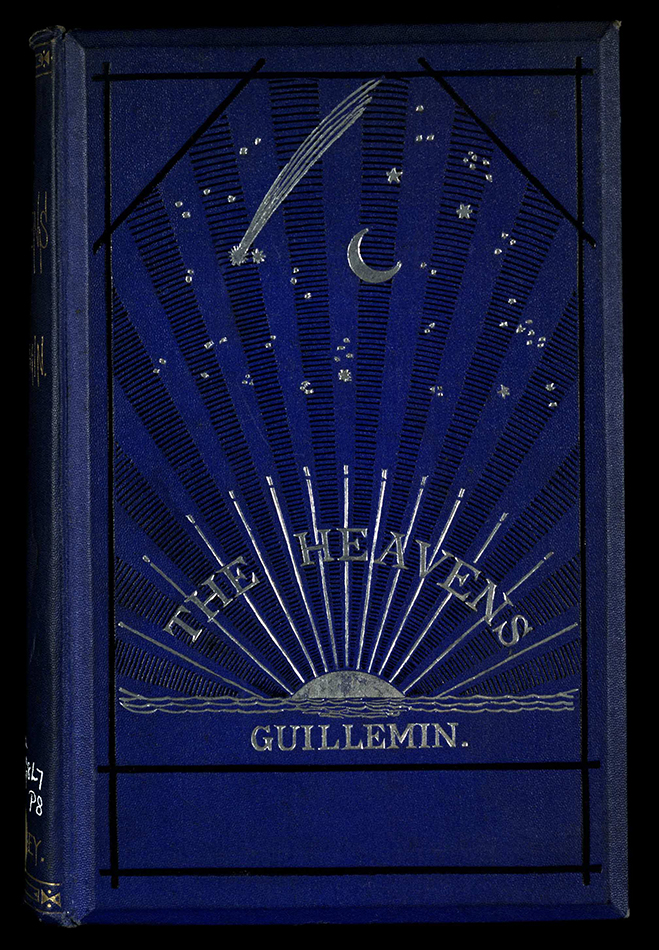
The Lighting the Past team has completed its fourth collection to date! This collection belonged to the Reverend Frederick Crombie and was donated to the Library by his sister in 1890. Approximately 2,000 volumes of this collection are uncatalogued, and will go straight to Phase 2. But on Lighting the Past, we have completed 701 bibliographic records and 865 item records in 3 ½ weeks. Compared with the large St Andrews collection we just devoured, this collection for us was little more than a sensibly-sized snack, such as a handful of grapes.
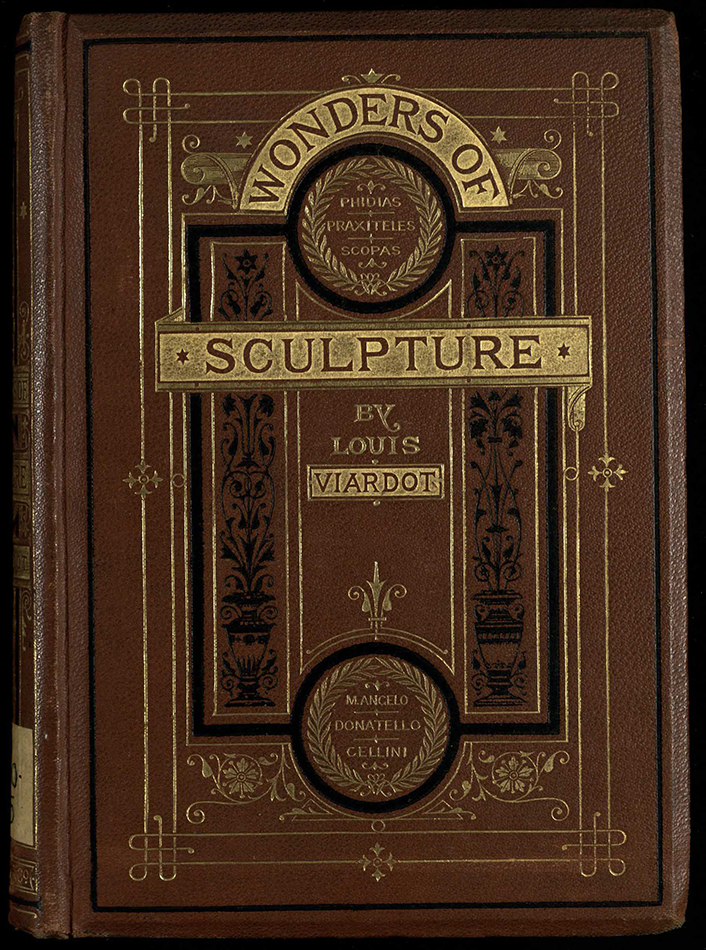
The late Reverend Crombie was a Professor of Divinity and Biblical Criticism here at St Andrews from 1868 to 1889. His collection is chiefly theological tomes, but there are also Grecian texts, literature collections, and histories as well. I suppose if I were to wax poetical, I might say something like: if a good library represents Paradise for scholars, his collection would be a shady theological and literary grove therein.
A very interesting feature of this collection is the window it opens into 19th century theology. As any theologian will tell you, it is hard to overstate the shift in theological thought (for better or worse) that culminated in this century. Anyone interested in 19th century theology will find a veritable cornucopia of treasures within this collection.
For example, some books are examples of how theologians attempted to account for divine revelation against the backdrop of the growing influences of the modern scientific revolution and naturalism. Two examples are Revelation: Its Nature and Record, by Heinrich Ewald (translated by Rev. Thomas Goadby), and Moses and Modern Science by James Elliot. Other books show attempts at syntheses between scientific findings and Biblical theology, such as A System of Biblical Psychology by Franz Delitzsch. There is also a volume entitled The Tübingen School and its Antecedents, by Robert Mackay. This book reviews the history leading up to the Biblical criticism movement that started in Germany.
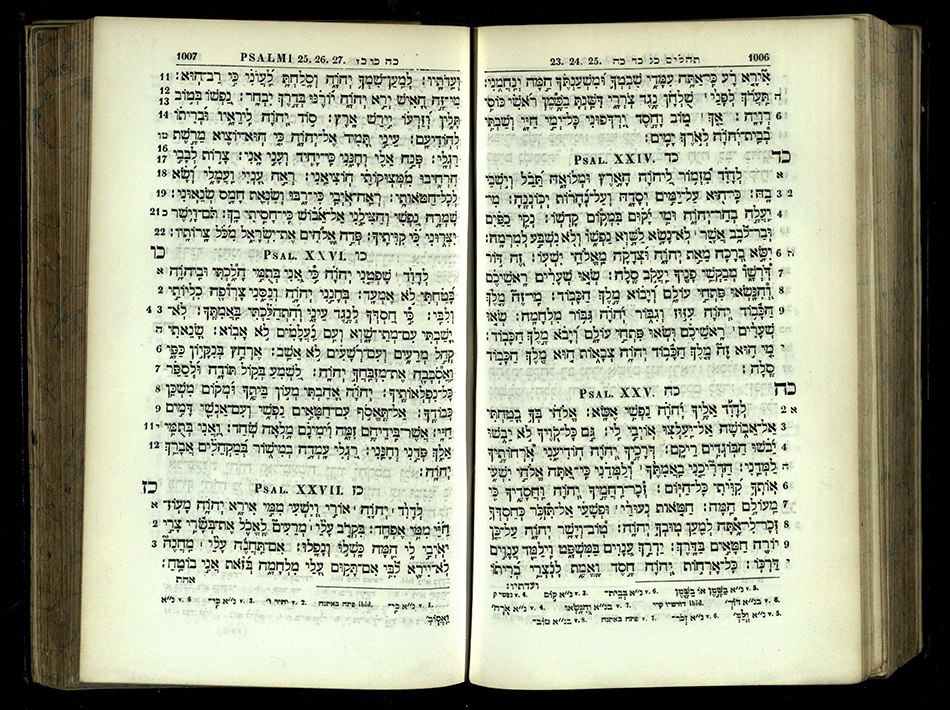
There are also numerous books reflecting 19th century views on Christian apologetics, such as Lectures on the Evidences of Christianity delivered at the University of Virginia During the Session of 1850-1. These lectures evince the shape of mid-19th century Christian apologetic thought, including various reactions to the growing naturalist cultural milieu. Historians might find it interesting to compare the differences in approaches and methodologies from this period with other periods.
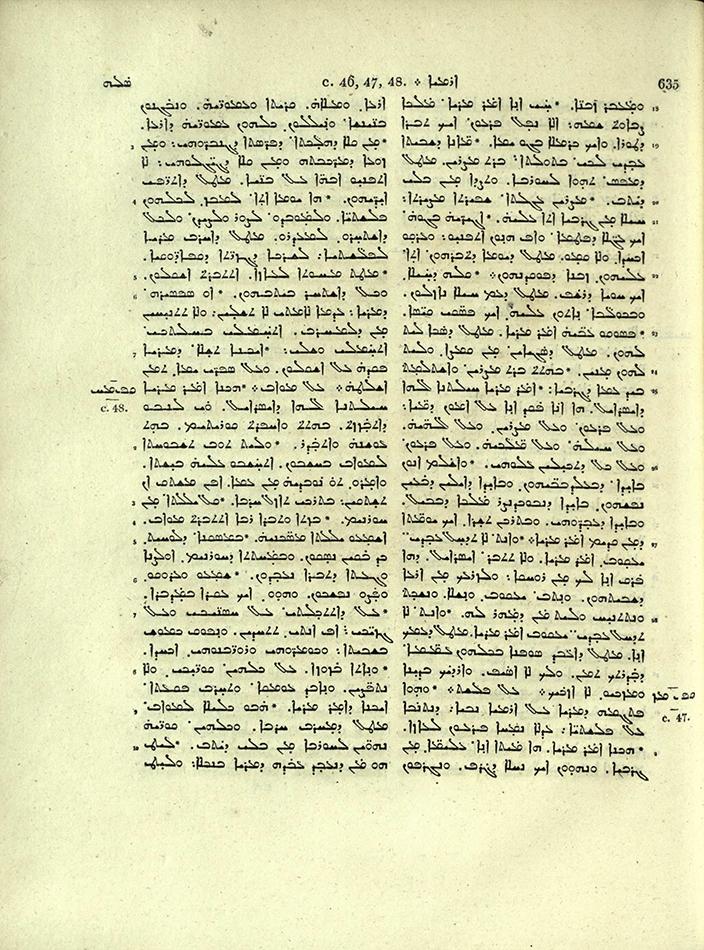
Speaking of historical theology, this collection includes many theological volumes from different periods, such as Contemplations on the Historical Passages of the Old and New Testaments. The author was the Right Reverend Joseph Hall, a 17th century Bishop of Norwich. There is also a three-volume commentary on the death of Christ by Anthony Bynaeus that was published in Latin (and Greek) in the late 17th century! In addition to theological and academic writings on theology, Crombie’s collection also contains Christian spiritual writings such as William Adams’ Sacred Allegories.
The collection also contains some interesting Bibles in English, Latin, Greek, and even Syriac. For example, there is the Biblia Hebraica, which is, of course, in Hebrew with English footnotes on the various manuscripts. There is also an Old Testament in Syriac! Its title in Latin is Vetus testamentum Syriace.
While this collection is primarily theological, there are some gems in other areas. There is a small but tasteful number of travel books, as well as a small but thorough collection of history books. At least three examples of the history collection bear mentioning. There is a seven-volume history of England, gorgeously illustrated, entitled The Pictorial History of England. There is also a German world history in fourteen volumes by Georg Weber. Finally, the collection contains George Grote’s ten-volume set of the History of Greece.
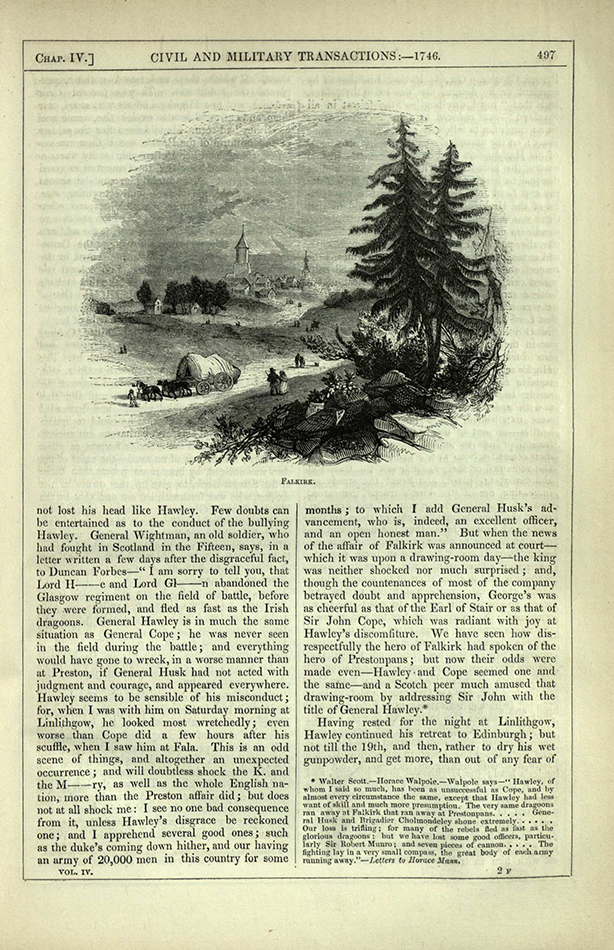
With regard to travel books, there is a two-volume set entitled Walks in Rome by Augustus J. C. Hare that describes in detail the layout of Rome that leaves one with the taste of ancient sunshine and history on his palate. Here’s a quote:
It must not, however, be supposed, that one short residence at Rome will be sufficient to make a foreigner acquainted with all its varied treasures; or even, in most cases, that its attractions will become apparent to the passing stranger…It is only by returning again and again, by allowing the feeling of Rome to gain upon you, when you have constantly revisited the same view, the same temple, the same picture, that Rome engraves itself upon your heart…
Walks in Rome Vol. 1, pg. 11.
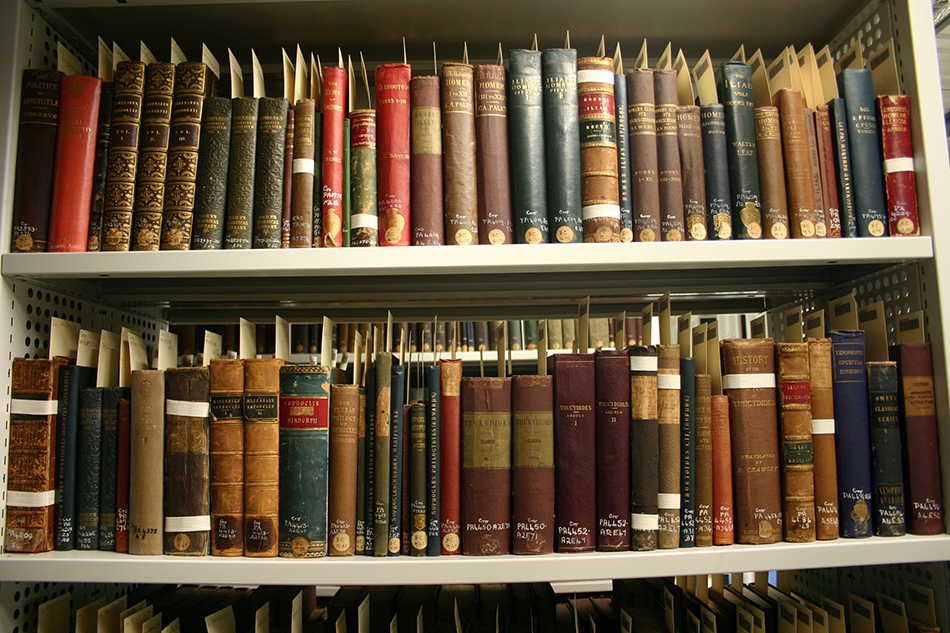
Switching gears to Crombie’s classics collection, we should note that in many cases the collection contains several different copies of the same Greek texts, but with different editors, commentators, and in some cases translators. For example, there is an edition of Thucydides’ History of the Peloponnesian War translated by Richard Crawley, and another edited by Thomas Arnold. Another interesting point about Crombie’s classics collection is that many of the texts were intended for use in schools, such as the edition of Homer’s Iliad by F. A. Paley. For those interested in texts like The Iliad, or the works of Athenaeus, Xenophon, and Thucydides, this collection offers wonderful resources for research and comparisons.
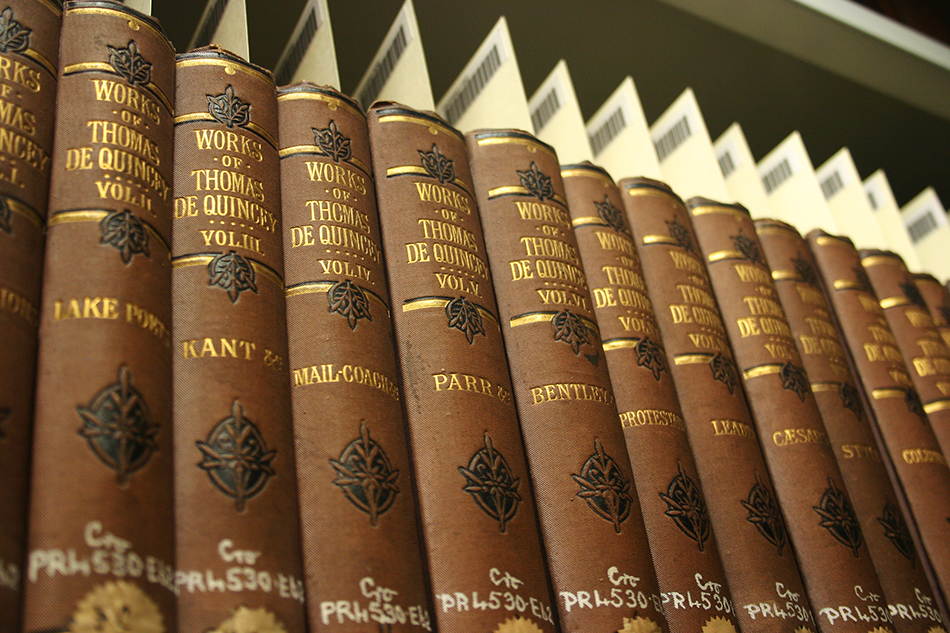
The collection also offers an eclectic mix of literary marvels. Four in particular bear mentioning. First, there is a set of Goethe’s complete works in the original German. Additionally, Reverend Crombie had a set of all the works of William Shakespeare, complete with a biography, notes on the text, and critical essays of the plays. What a find! He was also in possession of a sixteen-volume set of the complete works of Thomas de Quincey.
Finally, I would like to mention a nineteen-volume set containing the writings of the controversial religious sect leader, Antoinette Bourignon, in the original French. It should be noted that, with the exception of Goethe’s works, each of these sets has volumes missing. The Bourignon set is missing volume 2, the De Quincey set is missing volumes 15 and 16, and the Shakespeare collection is missing volume 6.
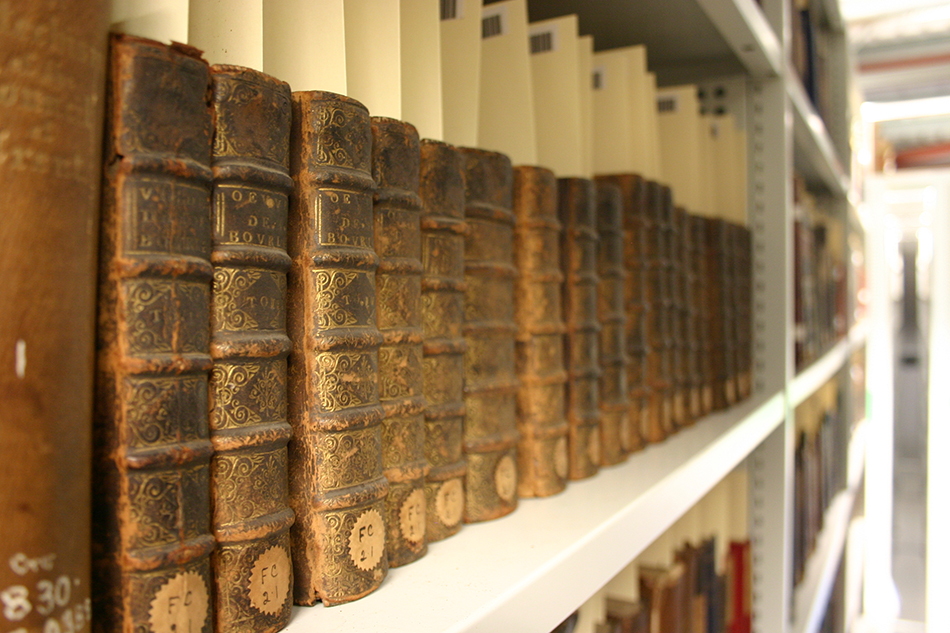
In conclusion, if the moon were a library and the sun a scholar…just kidding. I won’t wax poetical again. In conclusion, the Crombie collection contains many volumes that bear witness to and were written during the period of a great shift in thought. In addition, there are number of useful classical volumes fit for research and study, as well as an interesting literary mix. Interspersed throughout are texts on travel and various histories. Excitingly, the collection contains volumes from at least the 17th century forward. But this is only a general summary. There are many other books that do not fit these categories. I suppose the best thing to do would be to check out this rich collection for yourself!
Marc Cole
Phase 1 Cataloguer
[…] Facebook, and Twitter. Some blog posts focused upon a specific collection, such as those on the Crombie and Donaldson Collections – although as it turns out, at the time a large part of the Donaldson […]
[…] hands (I forget which…but it was old!), or writing a joint blog post on calligraphy, or writing a blog on the Crombie Collection. My time on LtP is filled with amazing moments like this, and I feel honoured to have been part of […]